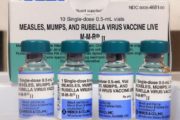What works and doesn’t in disaster health response
Richard Bissell, University of Maryland, Baltimore County and Thomas Kirsch, Johns Hopkins Medicine
On Saturday, April 24 2015, a major (Magnitude 7.8) earthquake hit Nepal shortly after midday. Long-expected by seismologists, this large earthquake has left many of the older structures in this mountainous and economically challenged country of 31 million inhabitants in ruins. It has also released avalanches affecting mountaineers from all over the world.
As is the case of many mountain communities in developing countries throughout the world, Nepal is vulnerable to a trifecta of risk: a seismologically active landscape, slide and avalanche prone hillsides, and insufficient resources to construct modern earthquake-resistant structures. The country’s poverty also means that it will require outside help to mount an effective response to the widespread needs of an earthquake stricken population.
At the moment, the most important question is how can the global community best respond? What can and what should international relief teams be prepared to do when responding to such an event?
Research provides some well-documented evidence that many international health-oriented responses are poorly targeted and may be influenced by objectives that play well on the home front rather than what’s needed on the ground. Let’s look at this from the perspective of the still-unfolding Nepal earthquake response.
Assess damage and determine immediate needs
The first function in the response to any emergency, whether it is a multi-vehicle crash on the local interstate, or a massive earthquake in the Himalayas, is to conduct an immediate situation assessment.
The most important aspect of this process is called the “needs assessment,” which uses an initial damage assessment to predict what kinds of rescue, health, food and shelter needs exist at that time, as well as what will likely be needed going forward in the near- and midterm. As the needs are established, then the appropriate response can be directed to meet those needs.
International and United Nations-based organizations with previous experience in these kinds of assessments, and armed with the latest satellite imaging technology to estimate damage across the affected country, can provide assistance to local officials in setting response priorities.

Japanese rescue team members remove debris while looking for survivors at the site of a collapsed temple caused by a massive earthquake in Kathmandu, Nepal.
Kyodo/Reuters
Search and rescue needs to happen immediately
Earthquakes cause buildings to collapse, trapping people and causing massive amounts of injury. This was the case in the 2010 Haiti earthquake and now in Nepal. Fallen buildings make immediate search and rescue efforts critical to saving lives.
Unfortunately the nature of crush injuries necessitates rapid rescues and limits the amount of “saves” that external search and rescue (SAR) teams can accomplish. Crush syndrome, which occurs when blood circulation to a limb is cut off by heavy debris, can lead to kidney failure even if the victim is successfully extricated. And crush injuries can also lead to severe, and sometimes fatal, blood loss. In both cases, rapid extrication is necessary to save lives.
Decades ago, disaster epidemiologist Erik Noji and others demonstrated that up to 90% of successful rescue extrications after earthquakes are done by family members and local bystanders. People trapped under rubble are likely to die quickly without immediate rescue. We can’t expect much success from teams that arrive on-site 48, 72 or even 96 hours after the earthquake. Based on previous history, it is unlikely that the US SAR teams deployed to Nepal (some 72 hours post-earthquake) will save many people.
Past history has shown that international SAR teams rarely save many lives at the cost of millions of dollars that might have been better employed in other relief and treatment functions, such as water purification, emergency food supplies, and medications to replace those lost in the rubble.
What kind of health response is needed most?
Then the question is: what kind of health response would better target the needs of the Nepalese? Urgent trauma care is critical in the first days and even the first week, and well-trained and provisioned teams from the region that can set up in days can make a difference.
These teams would be capable of providing necessary amputations and surgical repairs. It is important, however, that such surgical teams not use technologies that are beyond local capacity to deal with once the international teams have left. Working closely with local medical practitioners is key.
Much of the injury-related care does not need surgical intervention, and can be provided in clinics and mobile health settings. This might include care for broken bones, cuts, and superficial injuries. The extent to which outside help is needed is not a function of how fast international teams can respond, but rather how the well the country or region is prepared before the earthquake.
For example, our research shows that Chile was well-prepared to provide injury-related and primary care after the huge Concepción earthquake (Magnitude 8.8) in 2010, because that nation had a string of earthquake resistant primary care clinics and hospitals. The lesson here is that international response teams need to know the resilience status of local health care facilities before embarking on a response.

People sleep as they wait outside the departure terminal at the airport in Kathmandu, Nepal, April 27, 2015, following the April 25 earthquake.
Danish Siddiqui/Reuters
Infectious disease risks
In some cases, earthquakes may directly or indirectly lead to increases in infectious diseases. Earthquakes can damage or destroy sanitation systems. They tend to disrupt the local environment and how people live, leading to changes in the behavior of both humans and disease vectors, such as mosquitos.
For example, there was a rise in malaria in Costa Rica after the 1991 Limón earthquake. We found that this was due to several factors. People were sleeping outside, thus increasing their mosquito exposure, and regular mosquito- and malaria-control programs were delayed until bridges could be rebuilt.
Nepal has a long history of both intestinal bacterial or parasitic diseases and malaria. The earthquake has destroyed or damaged buildings throughout the country. Powerful aftershocks have made people understandably reluctant to return indoors, which means that many are sleeping outside. A concerted public health effort with international assistance may go a long way toward mitigating an earthquake-related upsurge in these kinds of diseases by prioritizing the provision of mosquito netting, temporary shelter, and clean potable water.
There will be more Nepals and Haitis in our future earthquake experience. Back in the early 1980s Dr. Claude de Ville de Goyet noted that certain kinds of disaster health relief seem to be perpetuated because “they photograph well.” But we should shift the focus to things that actually work rather than what plays well on the news.
Looking forward to our next international earthquake responses, let us take into account what we have learned from past experiences, and, in coordination with our local hosts, provide the kinds of health assistance that are most likely to meet the needs of the people affected.
![]()
This article was originally published on The Conversation.
Read the original article.
Warning: file_get_contents(https://plusone.google.com/_/+1/fastbutton?url=https%3A%2F%2Fkigalihealth.com%2Fwhat-works-and-doesnt-in-disaster-health-response%2F): failed to open stream: HTTP request failed! HTTP/1.0 404 Not Found in /home/kigal4health/public_html/wp-content/themes/goodnews5/goodnews5/framework/functions/posts_share.php on line 151












